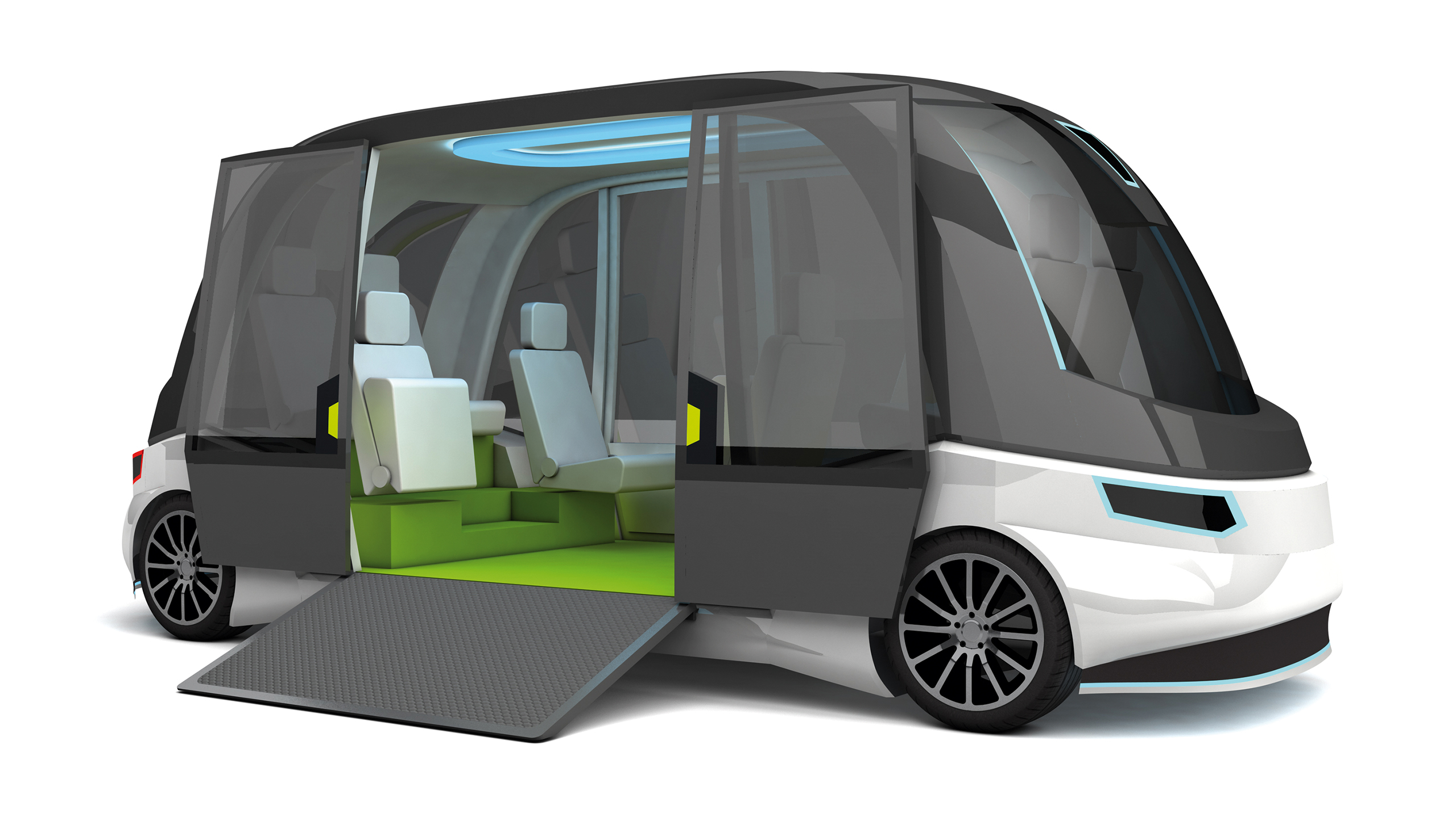Highly Automated Vehicle System on the Way to Real-World Application
A self-contained overall system connects vehicle and intelligent infrastructure
Highly automated vehicles that drive to their destination without any action on the part of the driver will soon become part of everyday street life. One of the biggest technical challenges will be to integrate them into the highly dynamic flow of today’s traffic and, at the same time, ensure maximum safety. As a solution to this, IAV is developing a self-contained overall system that connects vehicle and infrastructure. ITS fleets based on this could be ready for use within as little as two to three years.
Numerous concepts on future mobility are currently the subject of public debate. A key part in all this is played in particular by autopilots which control the vehicle on behalf of the driver. The technology is based on the vehicle’s on-board driving environment sensor system which, for example, recognizes traffic light signals and relays to the control electronics whether a traffic light is showing red or green. This does not always work without faults because the signals are – understandably – optimized for the human eye to read and must be processed in the vehicle for recognition by the electronics. This involves considerable effort, costs time which the vehicle occupant perceives as a delay, does not always work reliably and can lead to traffic situations being misinterpreted.

From concept to concrete solution
For this reason, IAV is pursuing an integrated, more comprehensive approach. “In our investigations, we realized very early on that we need to rethink things completely if we want to make highly automated driving safer while not significantly reducing driving speed”, explains Benedikt Schonlau, head of the Automated ITS department at IAV. By way of example, he mentions filtering into a busy roundabout. As the on-board electronics alone cannot estimate whether a gap is produced by cars turning off, automated vehicles wait far too long, obstructing the movement of traffic. In situations like these, it is helpful for the car to communicate with the infrastructure. If a stationary sensor system provides a bird’s-eye view of the roundabout and intelligent electronics evaluate the images, the vehicle can be given the command to move in good time.
It was back in 2014 that IAV started working on these cooperating systems in road traffic which connect the road infrastructure with the vehicle via an interface. Benedikt Schonlau: “This is an first step away from developing vehicle and infrastructure separately and a move towards intelligent transport systems.” In recent years, IAV has advanced the concepts and turned them into concrete solutions. In mid2016, all activities in this field were brought together in a dedicated organizational unit under Schonlau’s direction. Together with his team, he is working on a highly automated ITS system in which the ITS vehicle travels in commuter traffic along a given route that is equipped with appropriate telematics systems. Benedikt Schonlau explains: “For safety reasons, we have opted for a redundant driving environment sensor system supplemented by telematics devices at neuralgic spots along the route.” To this end, IAV equips conventional vehicles with the necessary technology, develops and validates the function of highly automated driving and offers the ITS vehicle, including infrastructure, as a turnkey project. “This is, of course, also a paradigm shift at IAV itself, away from being a pure engineering partner to becoming a solution provider offering end-to-end mobility concepts on a one-stop-shop basis”, Schonlau says.
Ready for use in two to three years
This self-contained solution, in which both components are specifically matched up to each another, could be ready for customers to use within as little as two to three years. Target groups, for example, include local authorities wanting to tie previously unprofitable secondary routes into local public transport, or operators of airport shuttle services.
The driver can either be dispensed with completely or take on other tasks, such as attending to passengers on VIP transfers. Both passengers and the environment benefit from the innovative transport concept because it creates a low-emission, safe, economical and convenient alternative to suburban individual car traffic, including the stress of finding for somewhere to park. The new solution available from IAV provides the exact answer to the current demands of the market which is looking for applications that can be quickly implemented in passenger transport with tangible benefit and precisely calculable economic viability. Alongside this, IAV is working with cooperation partners on intelligent systems for individual transport that provide flexibility and can be used on all journeys and for any appropriately equipped vehicle. It will, however, take several years before the communication protocols and functions are standardized in the way necessary and then implemented in the existing traffic infrastructure.
